Is Google's New Nano Banana Really a Photoshop Killer? Let's Test Nano and Compare it to Chat Gpt...
Should we be worried or excited?
Google released an updated AI image generation tool last week called Nano Banana. Silly name but packs a serious punch to Adobe Photoshop tools. As a creative I have been tasked to restore old photos, swap out people, remove people entirely or change the background of an image. I would be paid $100 easily for one of these jobs as it took a few hours of work to hand select objects in Photoshop and clone, replace and restore.
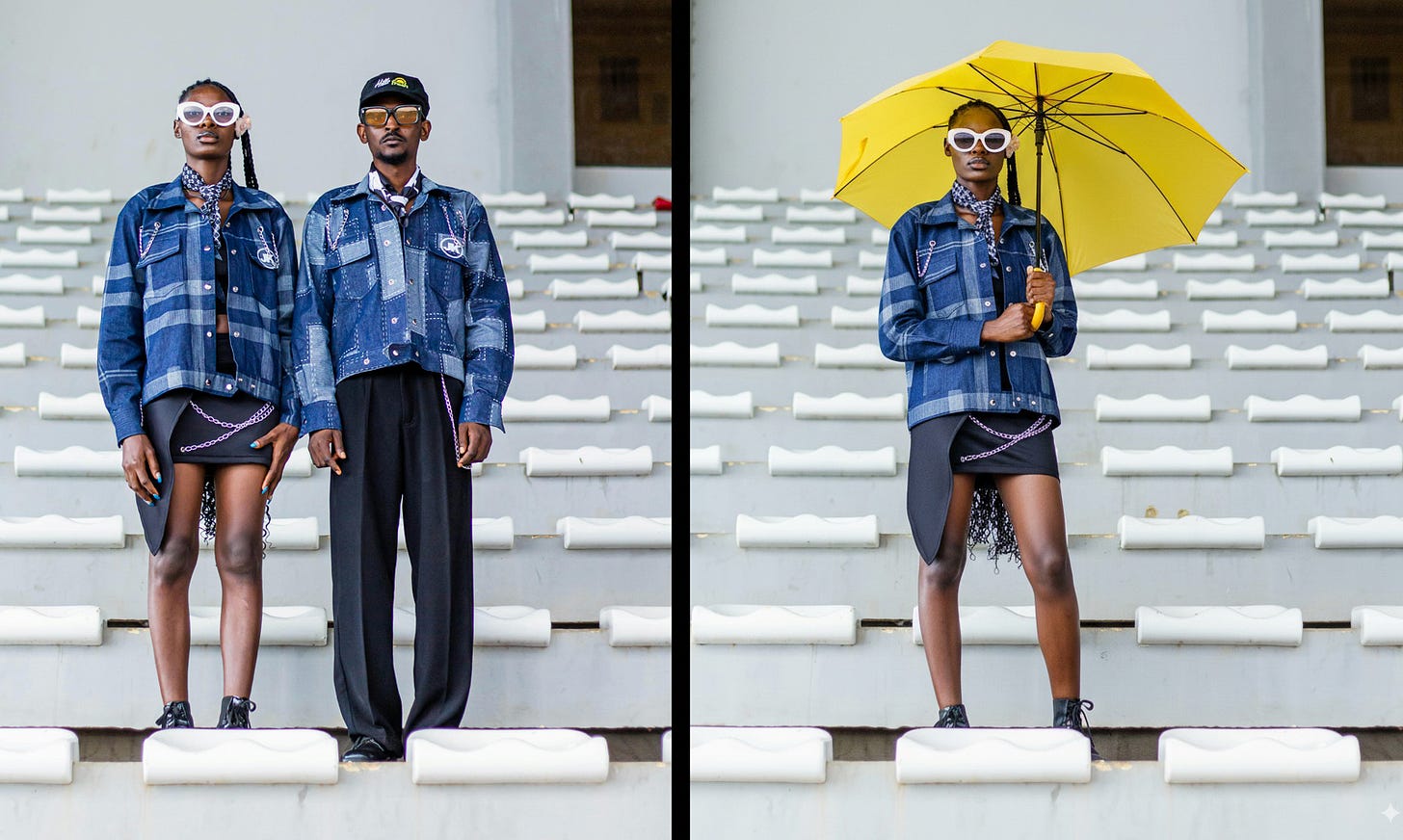
Now Nano Banana comes along and makes all that work disappear with a few well written prompts, but it also made some of those smaller billable hours disappear as well. With more things being done by AI automatically the less total work we can bill for.
I think what makes this different than other AI image generators is it actually keeps things consistent from the original photo.
Nano Banana solves many of the headaches designers face with AI edits: identity drift (where peoples characteristics change as you continue to edit a photo), messy backgrounds, inconsistency across changes and even doing a better job of handling typography and written text (but not perfect yet!).
But, is it a Photoshop Killer? We will explore this and also compare it against my favorite all time image gen tool ChatGPT-5.
When Google dropped Nano Banana (the unofficial nickname for Gemini 2.5 Flash Image), the design world immediately started buzzing: is this the end of Photoshop?
Let’s break it down without the hype.
What Nano Banana Actually Does Well
Identity & Detail Preservation
Most AI image editors up to now have been sloppy with continuity. You’d upload a face, edit it, and suddenly the jawline was different or the eye color shifted. Nano Banana actually holds onto identity. The same person looks like the same person even after multiple edits. For designers, that means fewer re-runs just to keep a client’s likeness intact. I asked Nano to remove her hat and change her sweater and she mostly remained the same.
Context-Aware Editing
You can type “blur the background,” “remove the water bottle,” or “make this black-and-white” and the model edits only what you asked for, leaving the rest of the photo untouched. Unlike previous models, it doesn’t over-hallucinate or destroy textures. This has been such a headache for me with Adobe Firefly and other lesser known AI image gen tools.Multi-Turn Refinement
Photoshop users know the power of incremental changes: mask, adjust, refine. Nano Banana supports iterative edits in plain language. I can slowly add and take away things in chat format, instead of hoping one large prompt gets it perfect. This allows me to have a sort of history panel, going back to previous versions of a photo that I like and continuing from there.Speed & Access
It is actually really fast. It’s free (for now!) and lives inside the Gemini app, web, or API. I did a speed test using the same prompt in Chat Gpt 5 and Nano Banana and Nano was done in a few seconds while Chat Gpt took several minutes.
Where Photoshop Still Dominates
Precision Control and layout design
Photoshop is a scalpel. You can push pixels, define layers, and manipulate masks at a surgical level. Nano Banana is fast, but it’s still a black box. If the edit isn’t what you pictured, you can’t just “nudge it left by 5px.” There is no way I want to lose that 100 percent control over all pixels. Nano just cannot handle it. Nano is great for single photo edits but layout design for a poster, there is no way Nano is going to compile and arrange all those layers and design elements like we can in Photoshop. Photoshop for the win.Design Systems & Workflows
Photoshop isn’t just a retouch tool. It’s the backbone of production items: CMYK prep, smart objects, typography integration, batch actions, and print workflows. Nano Banana doesn’t replace those.Reliability
AI image models can wobble. One edit looks brilliant, the next not quite right. For commercial design where consistency is non-negotiable, Photoshop still gives you certainty. Nano makes this reliability better but still not perfect. I asked Nano to take the photo of the woman with the hat and asked to remove the hat, change the sweater color, change her nail color and have her close her eyes. Overall I think it did an ok job at keeping the original characteristics of the woman but something was off.Upon further inspection there seems to be this repeated pattern to her skin. It does look AI generated and the photo looks more 3d model-ish than a real photo taken from a camera.
Nano VS. ChatGPT-5
I have spent thousands of hours generating imagery and graphics using ChatGPT-5 (and yes some classes coming out about that soon!) and I wanted to do a direct comparison of the two Image generation tools.
I am going to use the same hyper detailed prompt for each AI platform.
Make sure to check out my website for links to my best selling design courses and other things I offer. Note: I offer heavily discounted unique Udemy coupons for my courses only on my website.
My design theory pdf book is now discounted! It also comes with high rez files for all of my design theory posters!
Example #1 Perfume Bottle
These models are trained on a different set of image data so there will be differences. I am judging these based on how well it executed my prompt instructions and less so on stylistic choices. You can see the full prompt I used below.
ChatGPT-5 stuck with a warm marble and Nano a white.
I feel like ChatGPT has the better interpretation of the faceted crystal bottle shape.
I feel like they both showed the reflections and the caustics well but the ChatGpt shows a bit more or that iridescence shine on the bottle than Nano.
Nano did ignore my bokeh request for the fabric and Nano might have gone overboard by making the bokeh in front of the bottle instead of in the background on the fabric.
Nano made this image 4x quicker than ChatGPT-5! It always will win in the speed category.
OVERALL WINNER: ChatGPT
Prompt used:
A hyper-realistic 3D render of a luxury perfume bottle standing on a polished marble surface, designed in faceted crystal with beveled edges that create complex light dispersion and caustics across the table. The glass has subtle iridescence and micro-surface imperfections that catch the highlights. The liquid inside is a warm amber tone with subsurface scattering visible along the glass curvature. A delicate chrome cap reflects a softbox light in a perfect gradient highlight. A silk fabric backdrop has shallow depth-of-field blur with bokeh, and the lens is a 90mm macro shot at f/2.8. Subtle dust particles and faint fingerprint smudges enhance realism. Lighting should include both rim lighting and a faint colored bounce from below, simulating product-photography studio setups with HDRI reflections.
Example #2 Futuristic Woman
ChatGPT-5 went darker with the lighting while Nano kept the saturation low.
ChatGPT-5 once again handled the iridescent qualities way better.
I think Nano handled the embroidery seams better with more of a tactile realistic feel.
ChatGpt tends to do a an overly shiny texture anytime I do sci-fi related keywords and use it with clothing. It must be the library it is trained on. I like Nanos treatment of the body suit. It feels more photo realistic but the lower saturation does make it feel less complex.
ChatGpt ignored the lens flare request but Nano did not. Also, I requested a hard spotlight on top which Nano executed well and ChatGpt ignored.
OVERALL WINNER: NANO BANANA
I like the style of ChatGpt one better but I am judging on how well it followed my instructions. Nano for the win.
Prompt Used:
A futuristic portrait of a woman wearing an avant-garde metallic bodysuit made of reflective iridescent polymer with anisotropic highlights running along each seam. The suit has glowing neon filament embroidery in bright magenta and cyan that softly illuminates nearby fabric folds with emissive light. Her hair has a holographic oil-slick sheen with fine strands catching rim light. She stands in front of a brutalist concrete wall, slightly wet, with specular reflections and surface roughness variation. Shot in ultra-sharp 8K with a tilt-shift lens, giving selective focus only on her face and upper torso. The camera captures chromatic aberration on the edges of her silhouette, subtle lens flare streaking across the frame, and a faint volumetric haze behind her. The scene uses cinematic key lighting: hard spotlight from above with a soft fill and a secondary colored rim, producing dramatic chiaroscuro contrast.
Example #3 Handling Changes
How well do they handle changes to the same image. How much drift will there be in the character if I request a change in hair style?
Prompt: can you change her hair and make it long and braided with bangs and make it purple.
This is where Nano is really shinning!
It kept all the original characteristics, pose and lighting. ChatGPT decided to change the pose and lighting ENTIRELY! You can see how those dramatic unrequested changes can really effect you if you are doing multiple edits. There is no way to keep control when things are happening without consent.
CLEAR WINNER: NANO BANANA!
Writing prompts is really an art form so if you have Skillshare make sure to check out my BRAND NEW #1 trending mini class on Skillshare on prompt writing and AI basics. It won editors pick last week.
Example #4 Combining images into one.
The next challenge will be how well do they combine multiple images into one. I prompted them both to take the woman from the photo and put her into the forest photo with the dog from the third image to be by her side as a loyal companion. Let’s see how they did!
ChatGpt took a more cinematic approach giving it more of a storybook type treatment while Nano really kept the photo realism of the original photos.
The girls pose and lighting remain intact in Nano’s version while GPT gets a slightly different modified pose and dramatic lighting even though that was not requested.
I did not request a specific image size or format but Nano kept the original forest aspect ratio while GPT decided to give me a vertical very cropped version.
WINNER: NANO BANANA!
Once again I think the clear winner is NANO BANANA! It kept things the same from the images I uploaded and did not shift much at all. It did what a requested and this has been something I have been longing for in AI generated imagery since the beginning.
Example #5 Creating Mock-up
I wanted to see how they both handled typography, something that has always been difficult for AI models to keep intact. I uploaded an old soda can label I made onto a photo of a can I got from pexels.com. Let’s see how they fared.
WOW! Chat GPT failed at keeping the original typography and text alignment. I am really impressed on how Nano kept the original label without changes to much of anything.
The color is more closer to the original label design in Nano.
I feel like Chat GPT is desperately trying to stylize my images at the cost of what I am requesting. As a designer who needs precise control Nano is giving me the superior results. Nano is not perfect but it I can actually see it more applicable to my daily needs than other tools right now.
Example #6 Building 3d Render
Now how do they handle emulating high quality 3d renders?
These are not too far off from each other. Once again ChatGPT loves to use similar lighting effects and darker saturated hues. I can almost identify a ChatGPT photo now in the wild because of these repetitive qualities. That might not be a good thing if you are looking to find a unique look.
Both are great. I do feel like Nano interpreted the muted color grade request the best.
WINNER: TIE!
Not clear the winner on this one.
Prompt used:
An ultra-detailed render of a modernist glass pavilion built on a misty lakeshore at sunrise. The pavilion has floor-to-ceiling glass panels with both transparency and reflective refraction, producing layered depth of environment reflections. The interior features polished terrazzo floors with glossy resin flecks that catch highlights. Outside, the lake surface has micro-ripples creating subtle specular breakup and Fresnel reflections. Morning fog diffuses the light, with volumetric sunbeams cutting through structural beams. Rendered at a cinematic wide-angle 24mm with subtle barrel distortion. Tiny droplets of condensation cling to the exterior glass, with soft refractions visible inside. The atmosphere has a muted cinematic color grade, teal shadows and warm amber highlights, evoking fine architectural visualization. The mood is calm yet dramatic, with perfect balance between hard edges and atmospheric softness.
Example #7 Stylized Product Shot
Since ChatGPT loves to add style let’s see how Nano stacks up against Chat GPT’s stylistic sensibilities. I wanted to use untraditional product presentations so I can see how it handles things like folds, plastics, water filled items and creases.
ChatGPT filled up the bag with water like requested in the prompt, with the water staying in the interior of the bag. Nano decided to make it floating in water instead which is not what was requested.
Once again Nano shines with lighting by listening to the prompt and the key light.
WINNER: CHAT GPT
Style wise I like the nuanced effects (darker and moody) of the ChatGpt one. If we are judging on style that is. Nano is still listening to my nuanced prompts better each time.
Prompt Used:
A hyper-realistic product presentation where headphones are tightly wrapped in clear, translucent plastic film, the interior partially filled with water up to the midline. The plastic clings to the object with crinkled folds and tension lines, creating areas of stretched transparency and matte fogging. The water level inside refracts the product dramatically, bending and warping its silhouette while producing magnified highlights along the surface. Tiny air bubbles are suspended within, catching micro-specular highlights. Above the waterline, condensation beads and droplets cling to the inside of the plastic wrap, producing lensing effects. The scene is lit with cinematic contrast: a strong raking key light from the side creates bright specular flares on the plastic ridges, while a cold underglow in aqua blue seeps through the water below. Shot with a 100mm macro lens at f/3.5, the foreground is tack-sharp while the edges fall into a creamy blur. The background is a deep gradient from black to steel gray, with subtle volumetric haze, creating a moody, gallery-style environment. The entire look balances scientific precision with avant-garde fashion editorial drama, merging industrial design presentation with surreal visual storytelling.
Will I use Nano Banana as a designer moving forward?
Absolutely. I always need a photo. I have always had to rely on those free pexels.com websites for all that stuff. Now I can generate some decent photos for my branding and design work. Now I can have much more control of the changes of the images as I edit it with prompts, something we have not really had until now. I would not trust it with any type of typography or layout yet. That is still 100 percent done in Photoshop/Illustrator but it is getting there and getting there fast.
Final Verdict
No, Nano Banana won’t kill Photoshop. But it will kill the idea that Photoshop is the only professional tool for image editing. The next wave of graphic designers will toggle between AI and traditional tools seamlessly, and the ones who don’t adapt will find themselves left behind or be the ones who are honoring traditional approaches for maximum creative originality.
I am really impressed by Nano and the moves forward with bring consistent. I do believe it is worth learning how to use it.
What do you think of all these new AI tools? Please start a discussion below! Please share the article!
Hoping to create more mini courses on AI and possibly Nano Banana if it is of interest to you. Let me know below!
Make sure to try my #1 trending class on Skillshare on prompt writing and AI basics.
My design theory pdf book is now DISCOUNTED for Substack subscribers!
I just moved my pdf book off of Teachable and onto ETSY because they tripled!!! (yes, that’s right) tripled the monthly cost of hosting on Teachable making it cost more than I was making selling my pdf book.


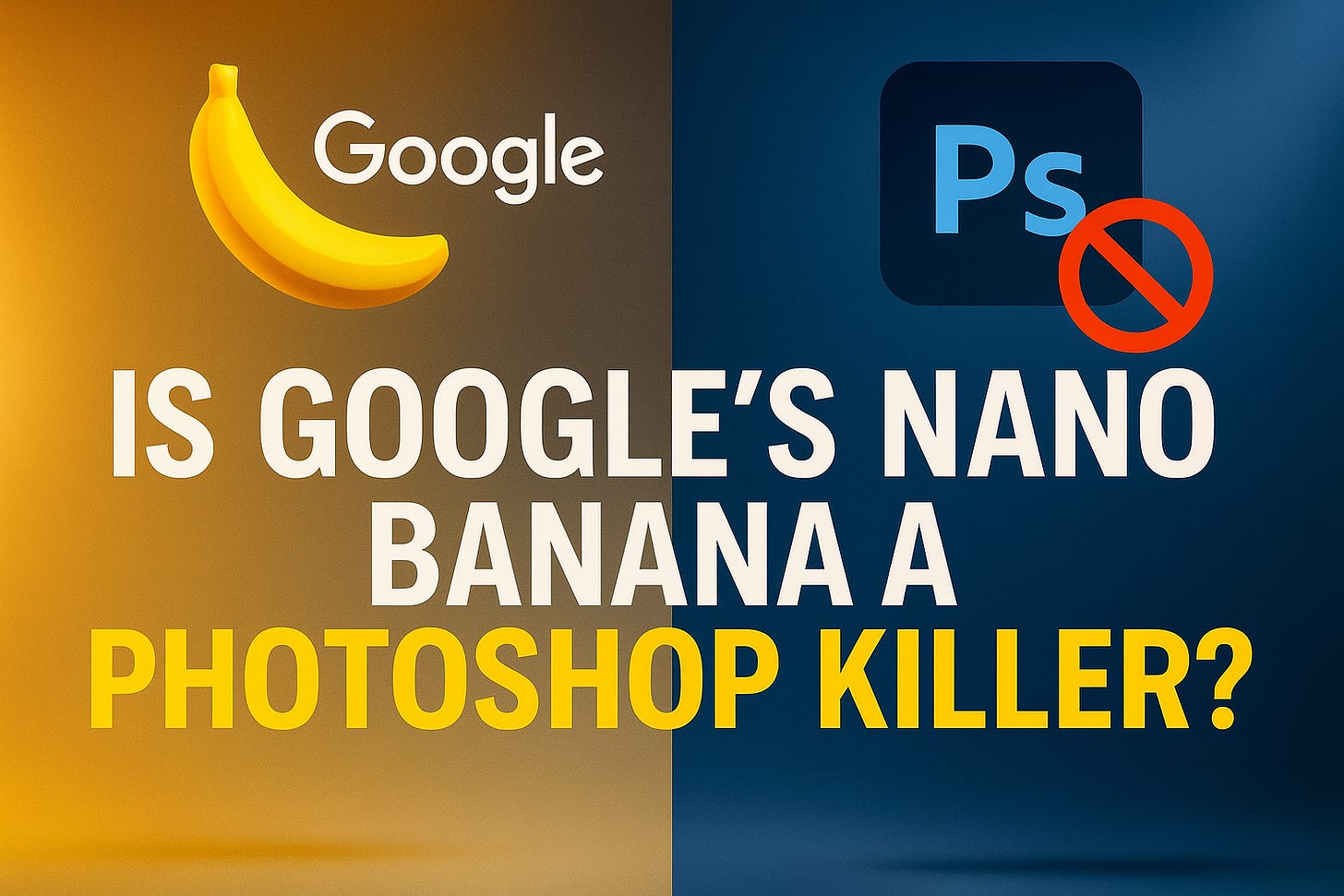

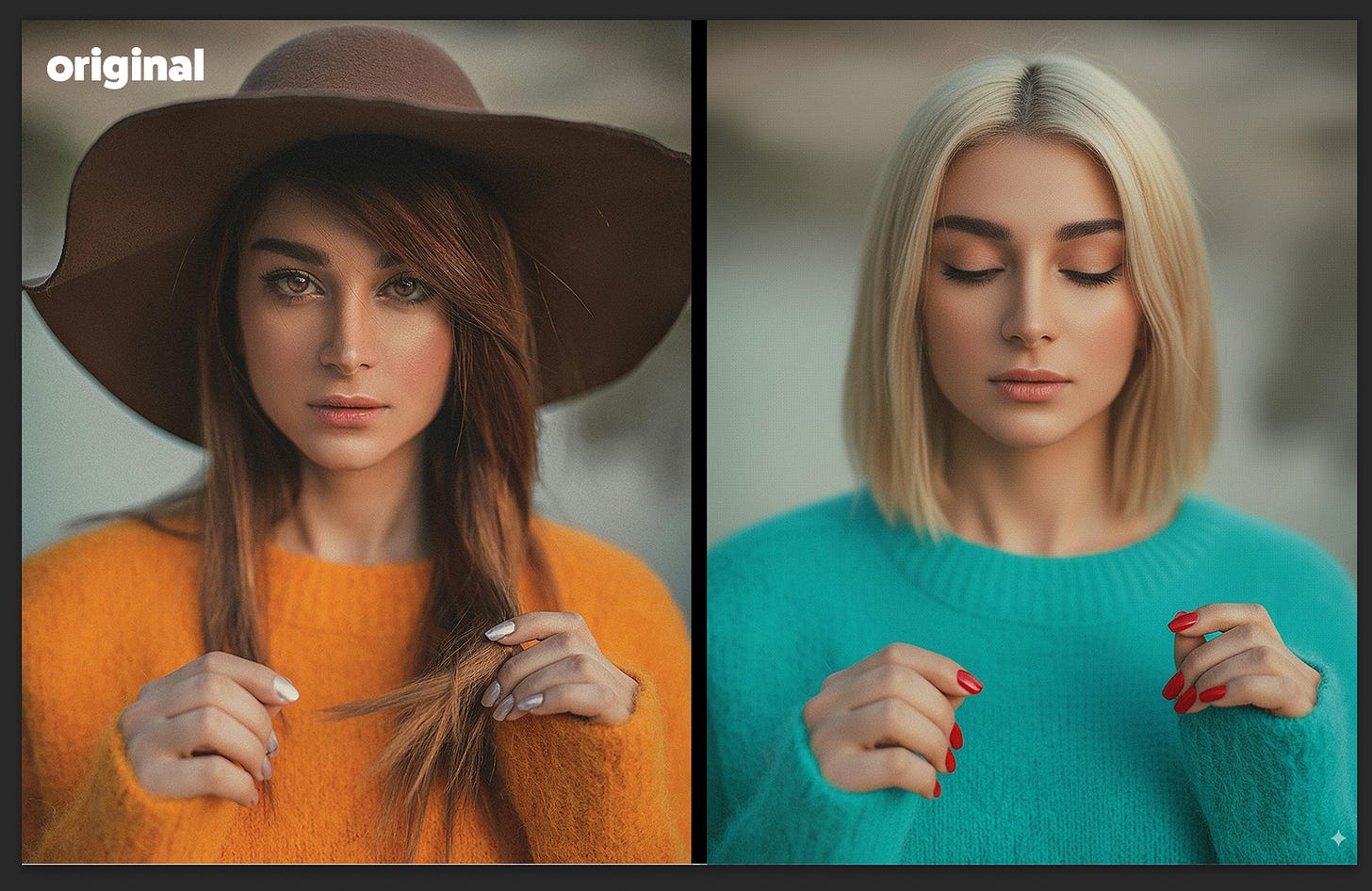

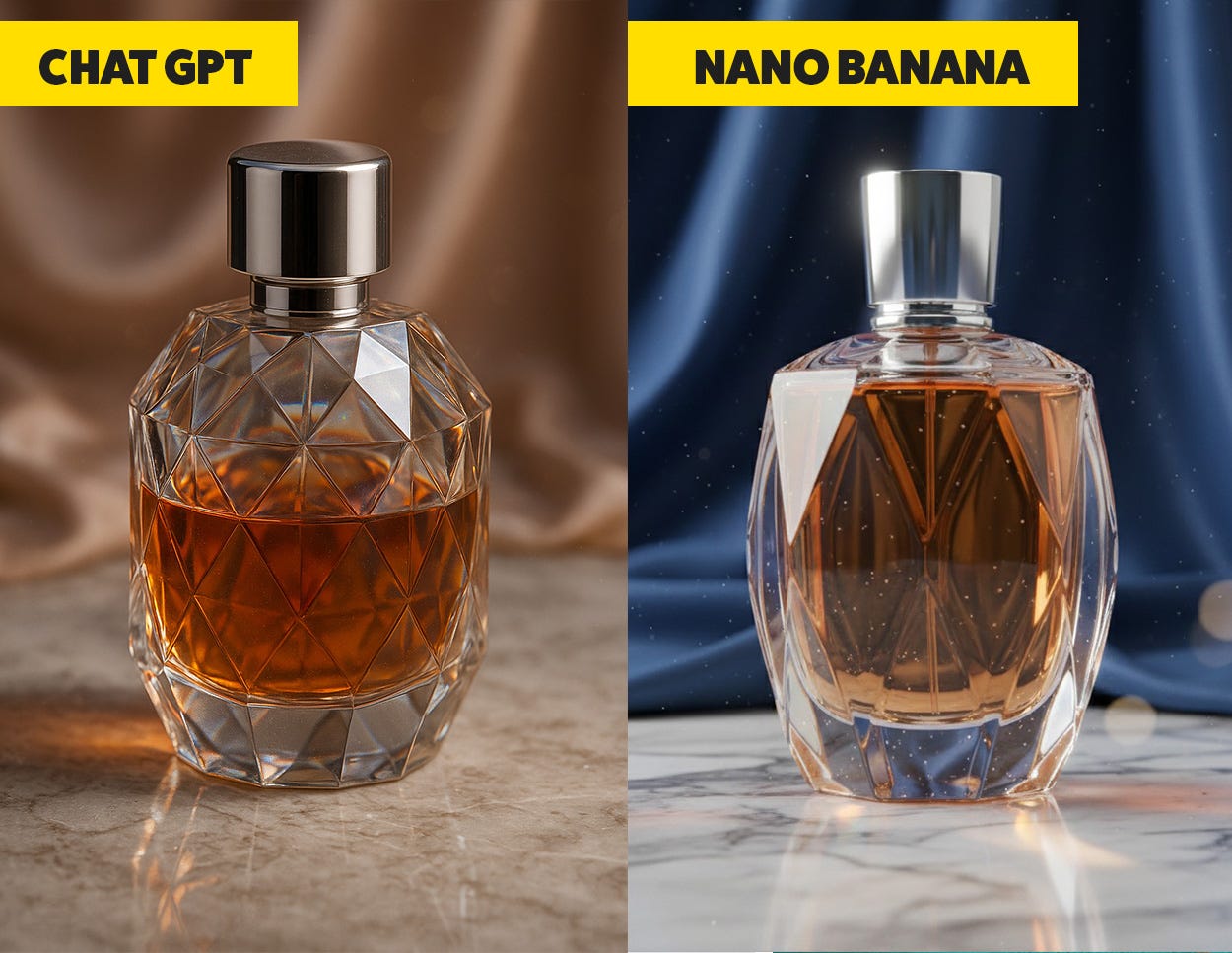
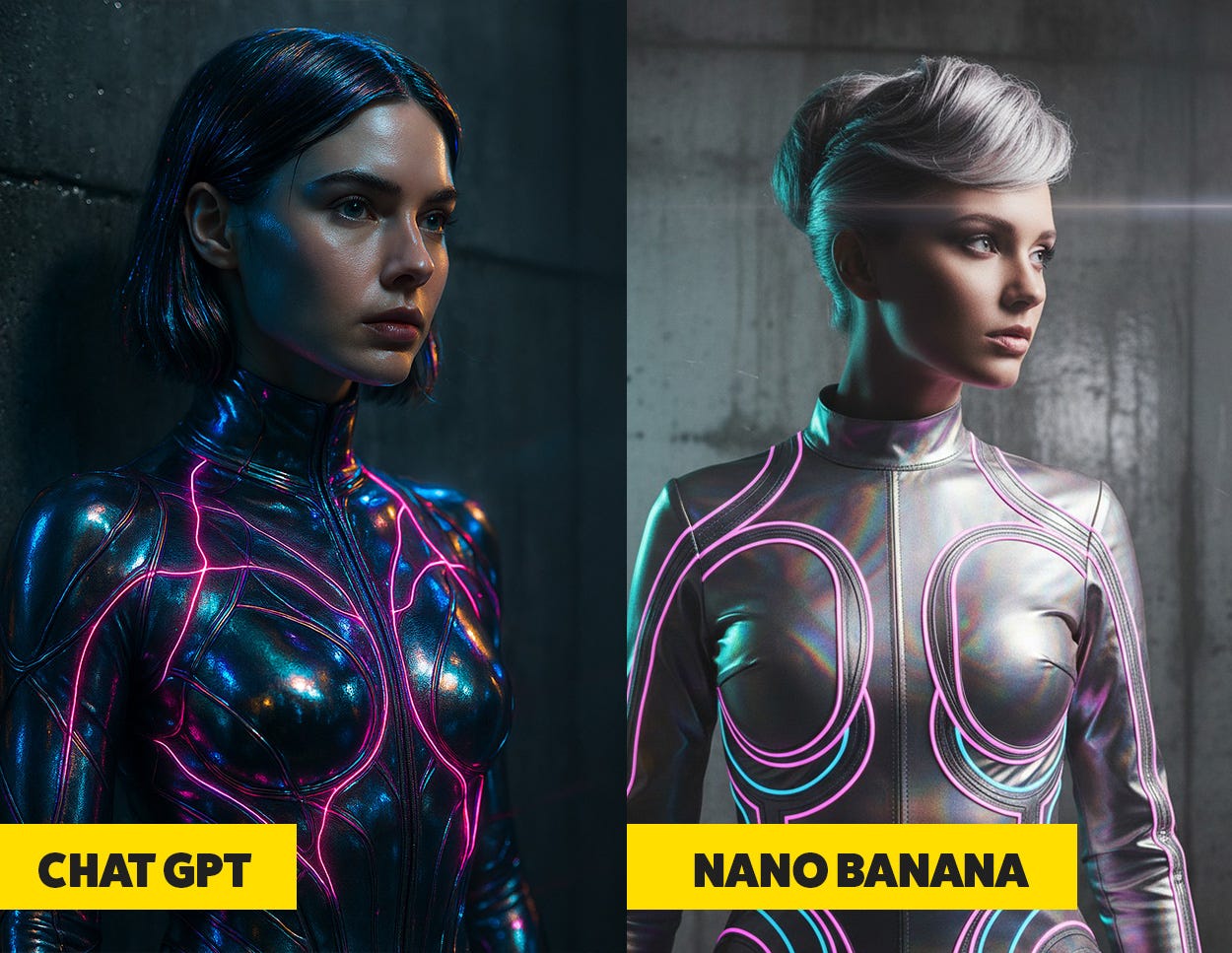
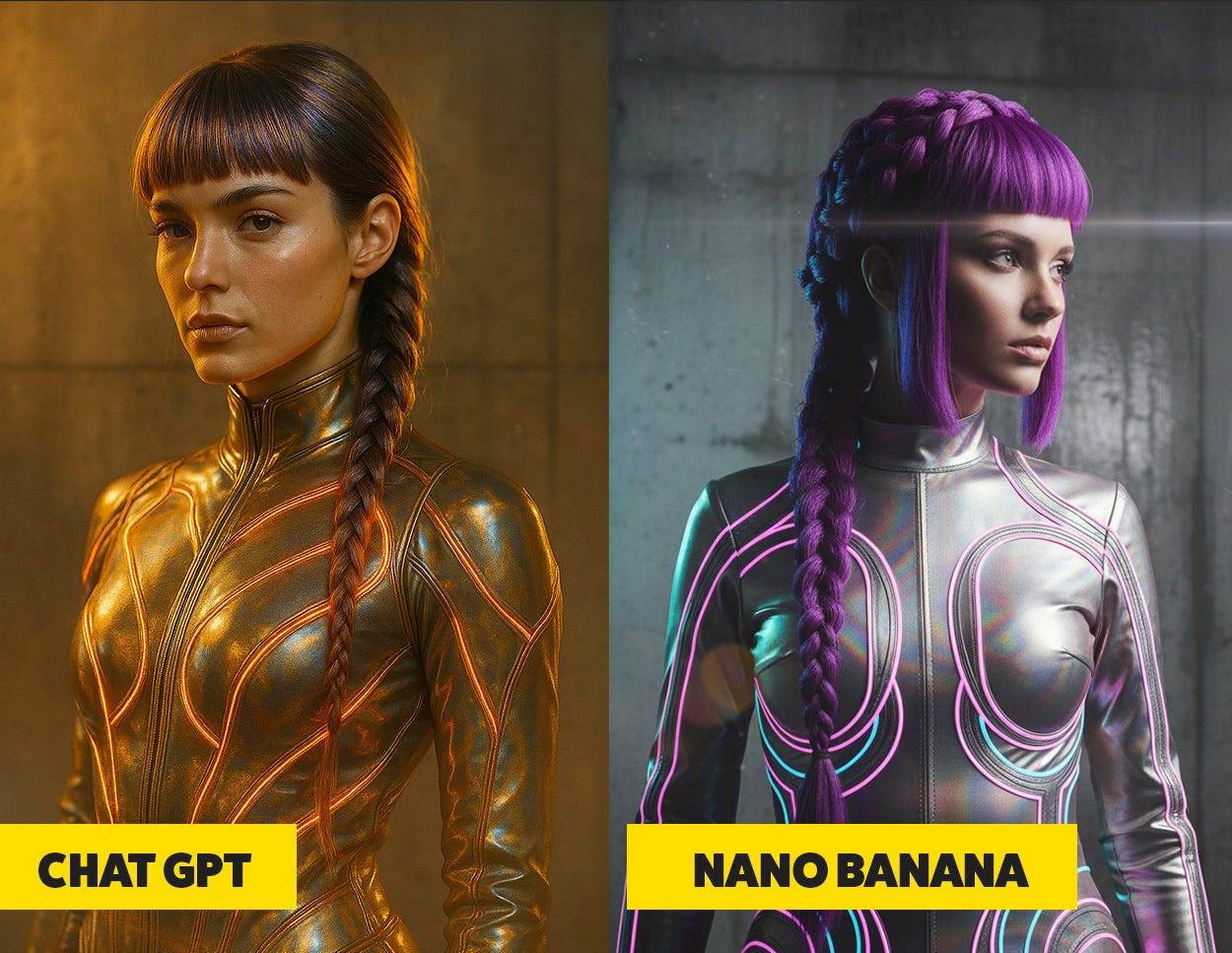

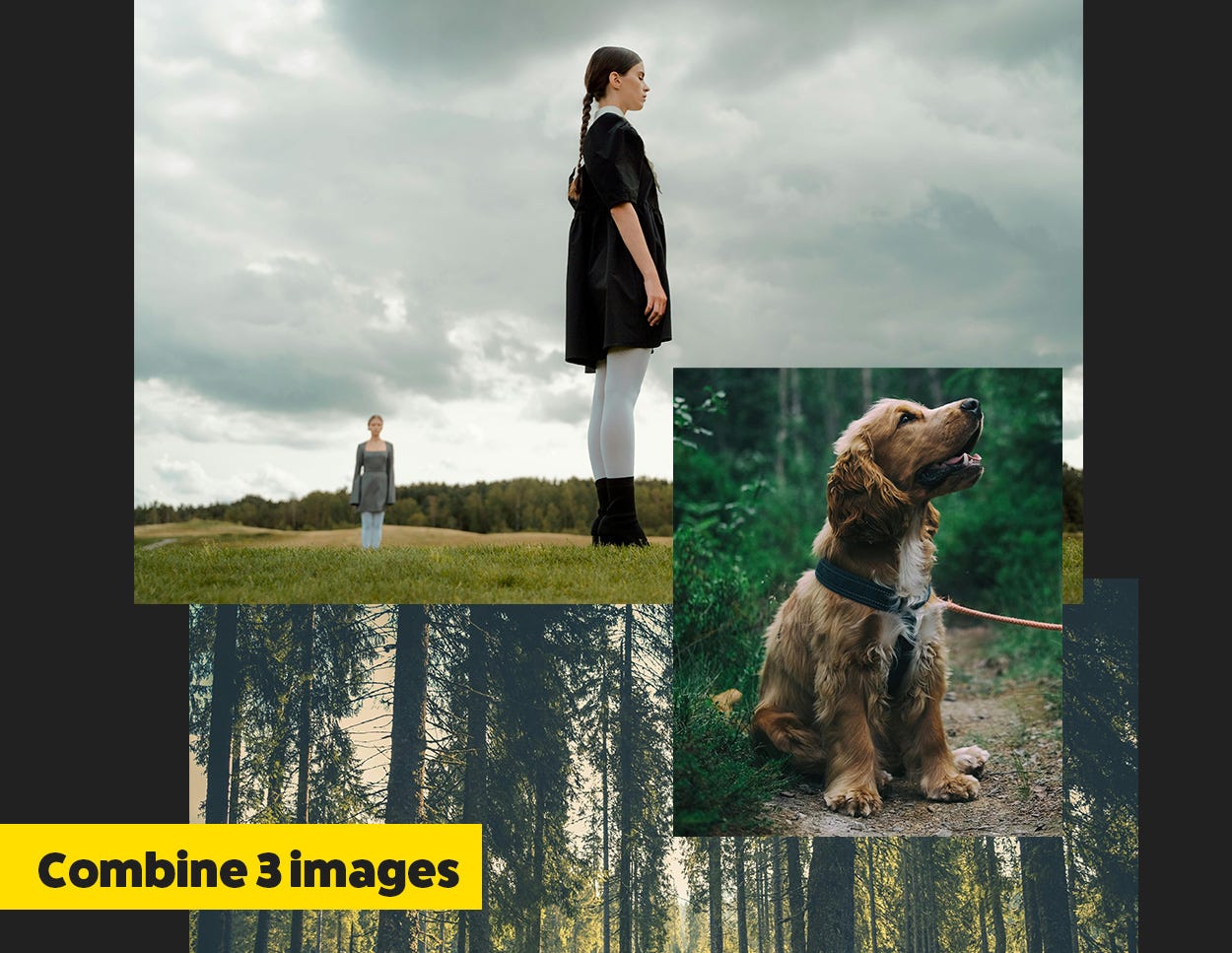
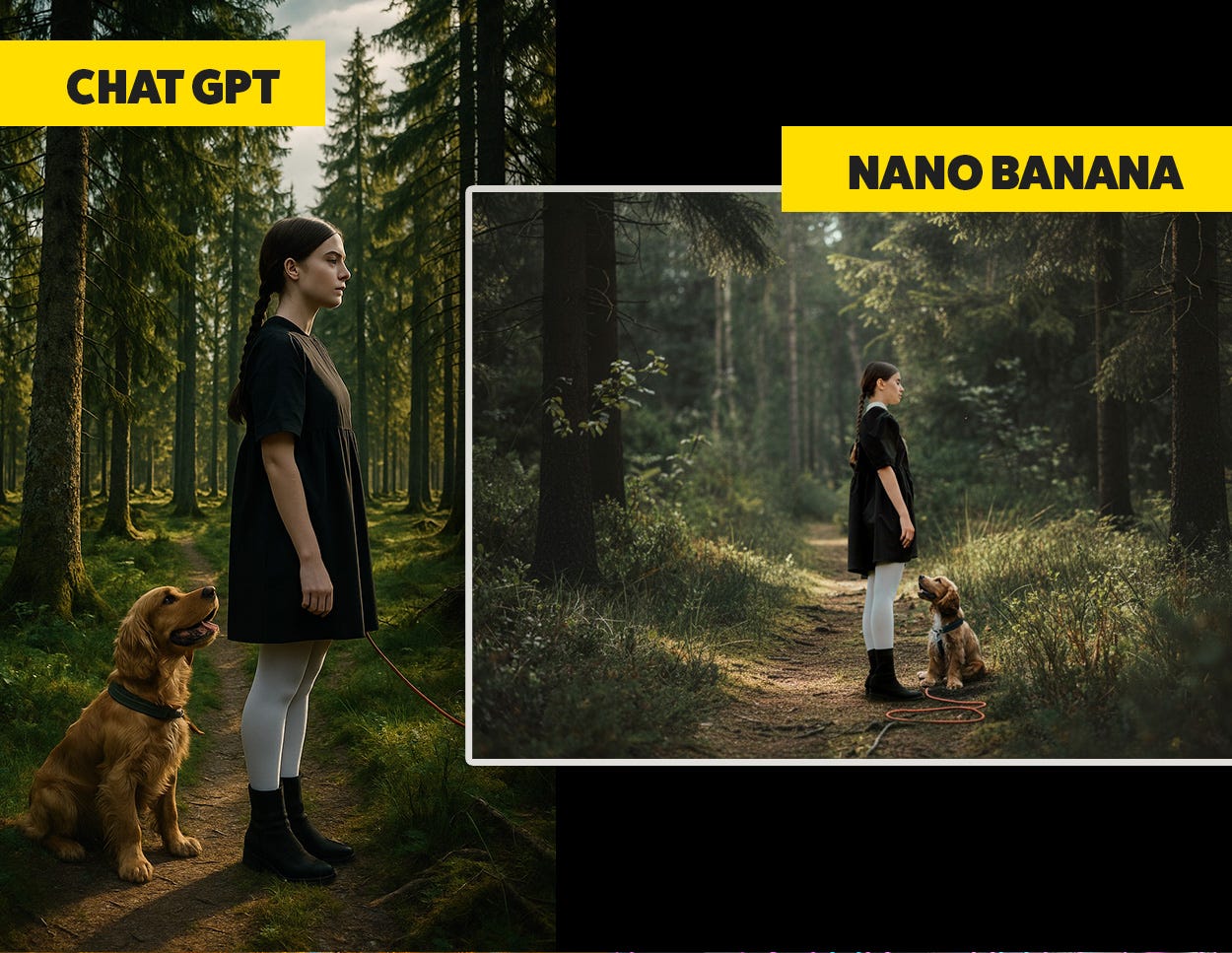
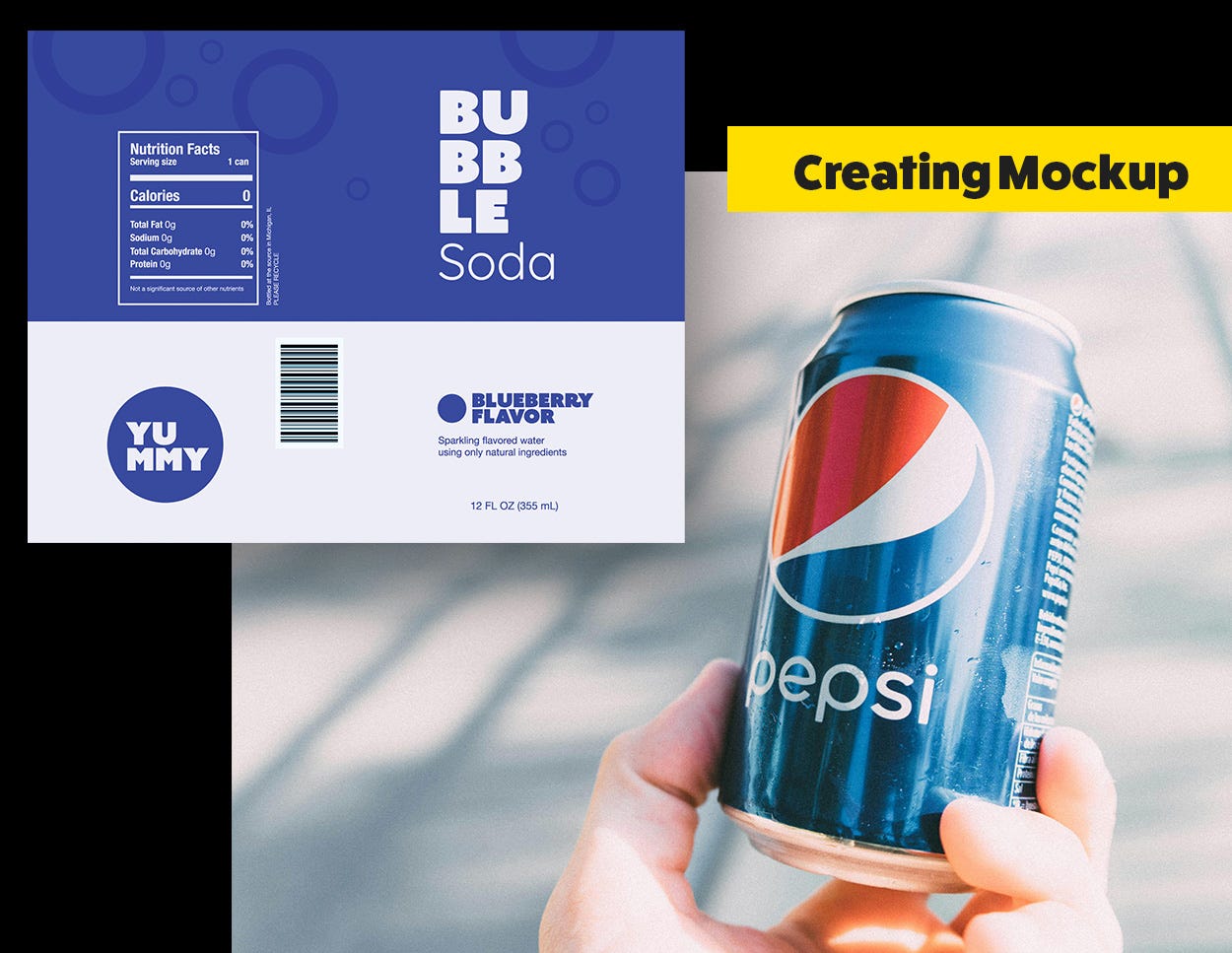

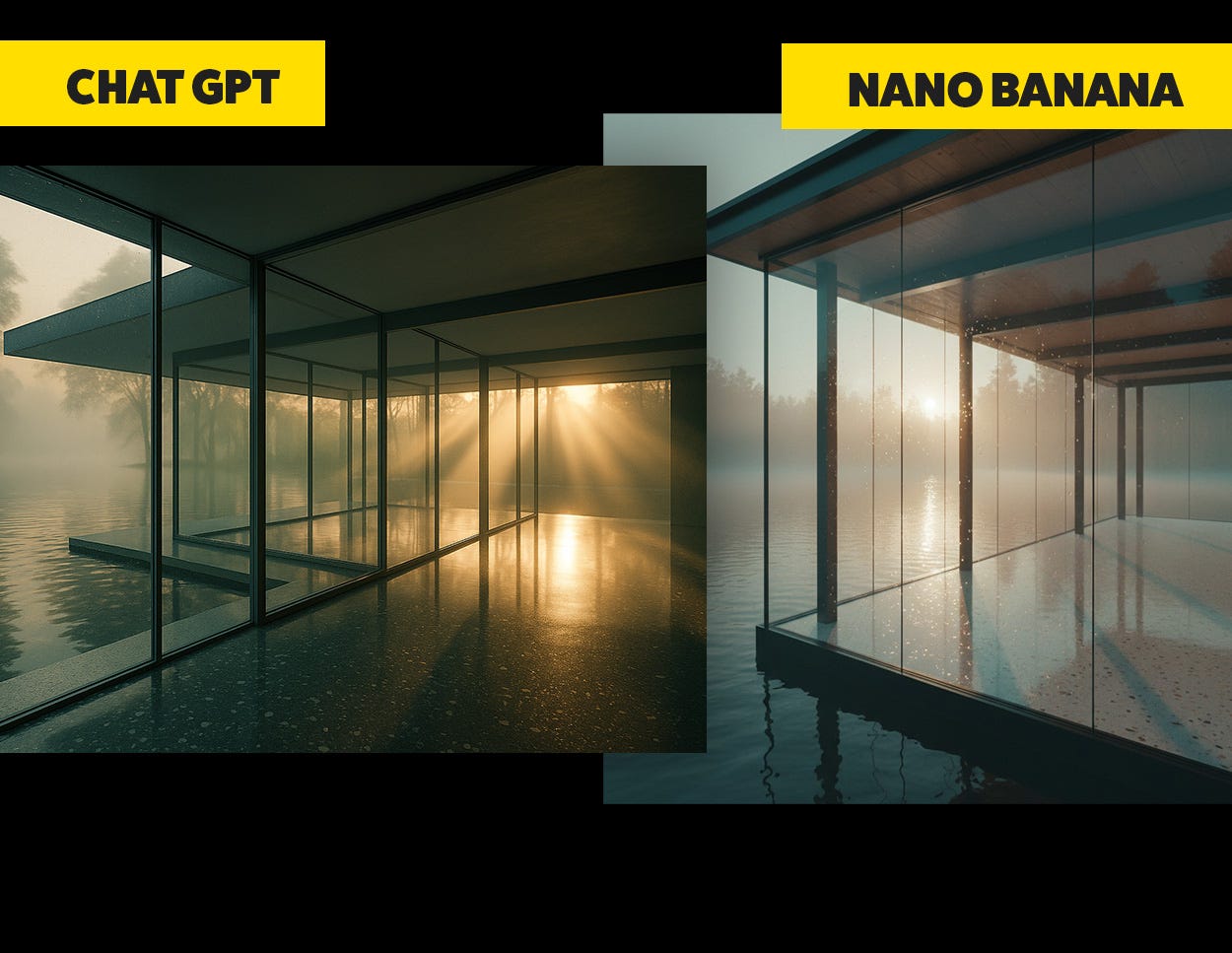
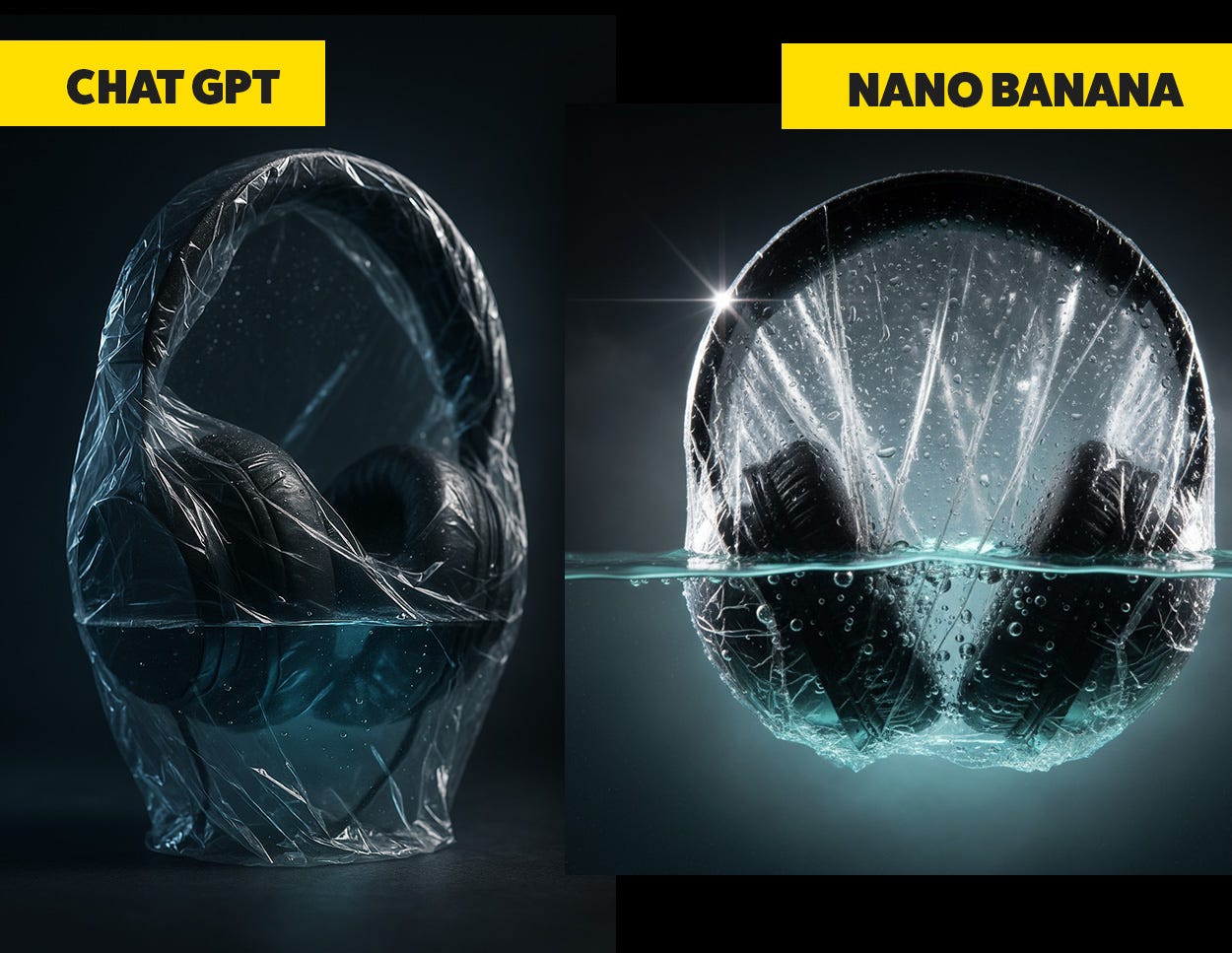
Thank you for this! I actually spent all day yesterday trying to find a decent mock up generator for my original embroidery designs, they try to change too much but Gemini seemed to be the best
Thanks for the comparison! I would definitely be interested in see more mini courses on AI and Nano Banana"... that would be just peachy!